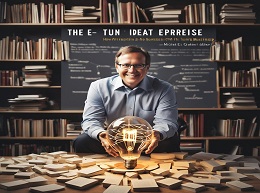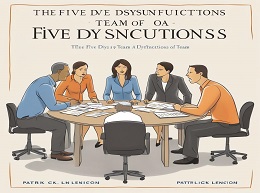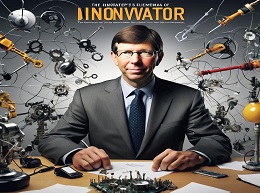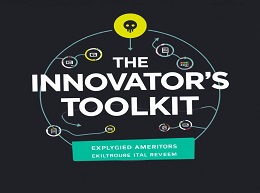The E-Myth Enterprise: How to Turn a Great Idea into a Thriving Business

Turning Vision into Reality: A Review of "The E-Myth Enterprise: How to Turn a Great Idea into a Thriving Business"
In the vast landscape of entrepreneurial literature, few books have managed to leave as significant a mark as Michael E. Gerber’s "The E-Myth Enterprise: How to Turn a Great Idea into a Thriving Business." Building on the foundation of his earlier works, Gerber delves deeper into the mechanics of creating a successful enterprise, providing a comprehensive roadmap for turning visionary ideas into profitable businesses. This review explores the key insights and strategies from "The E-Myth Enterprise," enriched with practical examples to engage aspiring entrepreneurs and seasoned business owners alike.
Understanding the E-Myth
The term "E-Myth" stands for the "Entrepreneurial Myth," a concept Gerber introduced in his previous bestseller, "The E-Myth Revisited." The myth suggests that most small businesses are started by entrepreneurs risking capital to make a profit. In reality, many are founded by technicians people skilled at a particular trade who believe their expertise alone can drive business success. Gerber argues that without the necessary entrepreneurial mindset and business acumen, many such ventures fail.
The Four Dimensions of a Successful Business
In "The E-Myth Enterprise," Gerber outlines four critical dimensions essential for transforming an idea into a thriving business: Visual, Emotional, Functional, and Financial. Each dimension represents a pillar of the business structure that must be developed and maintained for long-term success.
1. The Visual Dimension: Creating a Compelling Vision
A successful business starts with a compelling vision. Gerber emphasizes the importance of crafting a clear and inspiring vision that guides the direction of the enterprise. This vision serves as the foundation for all strategic decisions and helps align the efforts of the entire organization.
For example, Gerber discusses the vision of Walt Disney, whose idea of creating "The Happiest Place on Earth" led to the development of Disneyland. This vision was not merely about amusement rides but about creating an immersive experience that brought joy and wonder to families. Disney's clear and compelling vision attracted talented individuals who shared his dream and contributed to its realization.
2. The Emotional Dimension: Building a Strong Company Culture
The emotional dimension focuses on the human aspect of the business how it connects with employees, customers, and the broader community. Gerber stresses the importance of creating a strong company culture that fosters loyalty, motivation, and a sense of belonging.
Southwest Airlines is a prime example of a company that excels in the emotional dimension. Gerber highlights how Southwest’s focus on employee satisfaction translates into exceptional customer service. The airline’s culture of fun, care, and mutual respect creates a positive work environment, which in turn enhances the customer experience, leading to high levels of customer loyalty and brand advocacy.
3. The Functional Dimension: Developing Efficient Systems
Efficiency and consistency are key to the functional dimension of a business. Gerber argues that businesses must develop and implement systems that ensure smooth operations and deliver consistent results. This involves documenting processes, setting standards, and continuously improving operational efficiency.
McDonald's is often cited as a model of the functional dimension. Gerber explains how Ray Kroc’s implementation of standardized procedures and rigorous training programs enabled McDonald's to deliver a uniform experience across all locations. The company’s operational systems ensure that customers receive the same quality of service and product regardless of the outlet they visit.
4. The Financial Dimension: Ensuring Economic Viability
Finally, the financial dimension focuses on the economic health of the business. Gerber emphasizes the importance of sound financial management, including budgeting, cash flow management, and profitability analysis. A thriving business must be economically viable to sustain its operations and support growth.
Gerber uses the example of Apple Inc. to illustrate the financial dimension. Apple’s meticulous financial planning and innovative revenue models, such as the App Store ecosystem, have contributed to its impressive profitability and financial stability. By managing its finances effectively, Apple continues to invest in research and development, driving continuous innovation and market leadership.
Business Development Process
One of the strengths of "The E-Myth Enterprise" is its actionable advice on business development. Gerber outlines a step-by-step process for developing a business, from idea conception to execution and growth. He provides practical tools and templates, such as business plan frameworks and performance metrics, to help entrepreneurs implement his strategies.
For instance, Gerber introduces the concept of the "Business Development Process," a structured approach to building a business that involves identifying customer needs, designing solutions, testing prototypes, and refining the product or service based on feedback. This iterative process ensures that the business remains aligned with market demands and continuously improves its offerings.
Case Studies and Real-World Examples
The book is rich with case studies and real-world examples that illustrate the principles discussed. Gerber shares stories of businesses he has consulted with, detailing their challenges and how they overcame them by applying the E-Myth principles. These case studies provide valuable insights and inspiration for readers facing similar issues in their own ventures.
For example, Gerber recounts the transformation of a struggling bakery into a thriving enterprise by focusing on systematization and customer experience. By documenting baking processes, standardizing recipes, and training staff, the bakery was able to deliver consistent quality and scale its operations successfully.
Balancing Vision with Practicality
One of the challenges highlighted in the book is balancing visionary thinking with practical implementation. While a compelling vision is crucial, it must be grounded in reality and supported by practical strategies and systems. Gerber advises entrepreneurs to be both dreamers and doers, combining creativity with discipline to achieve their goals.
Adapting to Change
Another consideration is the need to adapt to changing market conditions. Gerber acknowledges that even the most well-planned systems and strategies may need to evolve over time. He encourages businesses to remain agile and responsive to market trends, customer feedback, and technological advancements.
"The E-Myth Enterprise: How to Turn a Great Idea into a Thriving Business" is an indispensable guide for entrepreneurs and business leaders seeking to build successful enterprises. Michael E. Gerber’s insights into the four dimensions of a successful business provide a comprehensive framework for transforming visionary ideas into profitable and sustainable businesses.
By focusing on the visual, emotional, functional, and financial aspects of their businesses, entrepreneurs can create compelling visions, foster strong company cultures, develop efficient systems, and ensure economic viability. The practical tools, real-world examples, and actionable advice make this book a valuable resource for anyone looking to navigate the complexities of entrepreneurship and achieve lasting success.
Whether you are starting a new venture or looking to grow an existing business, "The E-Myth Enterprise" offers timeless wisdom and practical strategies that can help you turn your great idea into a thriving enterprise. Embrace the principles outlined in this book, and you will be well on your way to creating a business that not only survives but thrives in the competitive marketplace.













